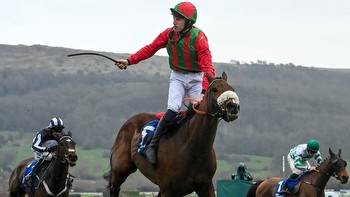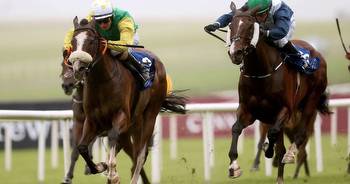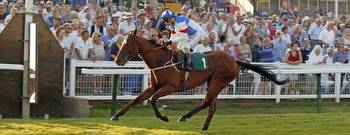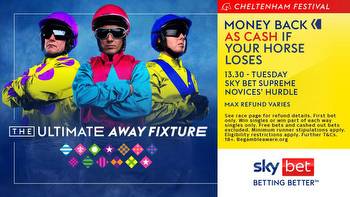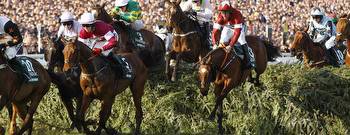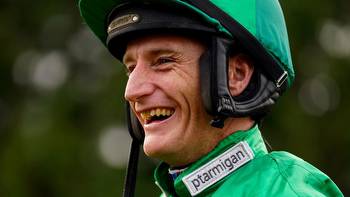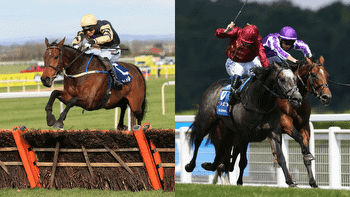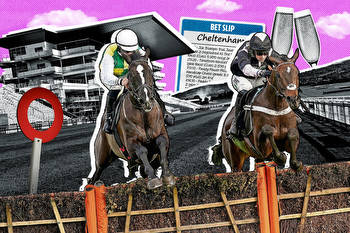Introduction to Dobbing: Part 3 geegeez.co.uk
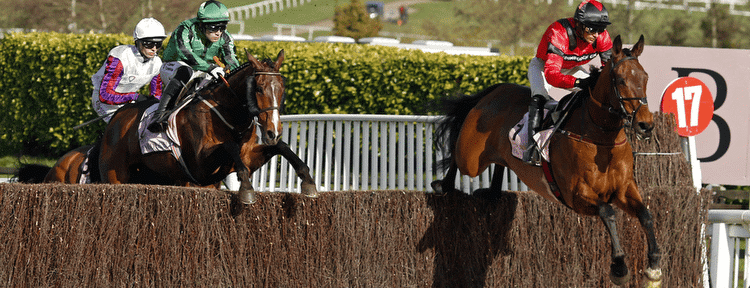
This is the third in a short series of articles connected with betting on horse races in running, writes Dave Renham. In the first piece, I discussed the idea of DOBBING which essentially means ‘double or bust’. You either double your money or lose your stake. Just to recap, here is a worked example:
Imagine you back a horse at 20.0 for £5; in order to create a potential DOB you try and lay the horse at half the odds for double the stake – so you set a lay at 10.0 for £10. If the horse hits 10.0 or lower in running, your lay bet will be matched and regardless of the result you will win £5 (less commission). If the horse loses but doesn’t hit 10.0 or lower then you lose your £5 stake.
In the second piece I looked at some in-play horse racing data on the flat and this time my attention switches to National Hunt racing. One could argue that National Hunt racing is easier to trade as the races are longer which generally allows the trader more time to make informed decisions. But does the data support that contention?
As before I am going to look at 20 months’ worth of recent UK data which is a very decent sample in terms of size. In fact, I started my research by splitting the data into two and looked at the overall NH DOBBING percentages for each group. One came out at 44.4%, the other at 44.3%. Hence, I feel we can be very confident that this data set will provide us with extremely accurate figures.
Dobbing Percentages by NH Race Type
My first port of call is to split the data into three race tyoe brackets: steeplechases, hurdle races and National Hunt Flat races (bumpers). Here are the findings:
There is not much difference between the three, but NH Flat races have offered the best chance of DOBBING, followed by chases and finally hurdle races. Most National Hunt Flat races are around two miles so it should be no surprise to see the DOB percentage at 45.9%. If you remember from the previous article the flat results for races of 17f+ saw the DOBBING percentage standing at 45.2%. Hence the NH Flat figure correlates positively with that.
Dobbing Percentages by Handicaps / Non-handicaps
Onto handicaps versus non-handicaps next and, for this data, I am excluding the NH Flat results (which are all non-handicaps) as we have that figure already. In the graph below I have shown the overall handicap versus non-handicaps splits, as well as then splitting this by chase races and hurdle races:
As can be seen in the chart above, horses are more likely to DOB in handicap races as opposed to non-handicaps. Meanwhile, handicap chases are the most successful DOBBING-wise although handicap hurdlers DOB only 1% below this figure. The lowest figure goes to non-handicap hurdle races where just 41.3% of horses successfully DOB.
Dobbing Percentages by Distance
When we looked at the distance splits on the flat in the second part of this series we saw that, as the distance increased, so did the DOBBING percentages. Here now is the National Hunt racing breakdown:
As we can see, the same pattern occurs here with the longer the race, the better the chance of a horse DOBBING. In the first article I had alluded to the fact that this might be the case. Races of two miles or less give us the lowest overall percentage (41.9%), whereas the longest distances of beyond three miles have seen horses DOB 46.9% of the time. There is a very strong linearity of improved DOB percentage as race distance increases.
It is interesting to note that races beyond three miles have seen a slightly higher percentage of DOBBERS in non-handicaps compared to handicaps, which is a surprise given the handicap/non-handicap stats I shared earlier. However, for the record, non-handicap chases at further than three miles have seen 48% of runners DOB. This is the highest figure based on distance parameters I have found to date.
Dobbing Percentages by Market Odds
Let's now look at the data in terms of Betfair Starting Price (BSP). For the flat data I used market rank rather than price and the flat DOB% stats were quite even although favourites (that were not odds on) had comfortably the highest figure in those findings. I felt it was worth changing it up a bit and using actual market prices, which is arguably a more accurate measure:
As with the market data from the flat there is no discernible pattern here. It does, however, look best to avoid the essential ‘no hopers’ priced over 500/1. However, it is surprising, to me at least, to see both the 50.01 to 100 price bracket and the 100.01 to 500 price bracket both hitting over 47%. I can’t explain that one, I’m afraid!
Dobbing Percentages by Courses
A look at courses now. Here are the DOB%s for each course, ordered highest to lowest:
There is quite a difference between the highest figure, at Newbury, 50.6%, and the lowest, Fakenham, 41.2%. What immediately strikes me is the difference in the configuration of these two tracks. Newbury is one of the biggest in terms of circumference being 1m 7f; Fakenham is at the other end of the scale at just one mile all the way round. Cartmel (one mile circumference) and Plumpton (1m 1f circumference) are other tight/sharp tracks that appear down the bottom of the DOBBING percentage list. Meanwhile near the top you have Ascot and Lingfield whose tracks measure 1m5f round, Cheltenham at 1m4f and Donny at 2m. Kelso which is in 4 spot does buck the trend though being just 1m1f in circumference.
Digging a little bit deeper, there could be something in this theory as I decided to find the average circumference of the top ten DOBBING% courses and compare that with the average circumference of the bottom ten. The top ten courses averaged out at 12.6 furlongs, while the bottom ten averaged out at over two furlongs shorter at 10.4 furlongs. Of course, a theory is simply a theory, but the numbers I have uncovered at least seem offer some support.
I need to add a proviso here that these stats come from only 20 months' worth of data. It is still a decent chunk of data for each course but, ideally, I would like four or five years’ worth.
National Hunt Horses with good past DOB%s
To finish this piece, I have tried to find a handful of horses that have, in the past, had a high DOB%. My hope is therefore that this will be replicated over the coming season. So here goes – there are nine in total and I have listed them in alphabetical order:
Ahoy Senor – Ahoy Senor is one of the top 3 mile chasers in the country. He has DOBBED in 11 of his 15 races, but with one of those races seeing him start odds on, this improves to 11 out of 14 (78.6%). In those remaining 14 races he has won five of them, but in six of the other nine he has still halved in price or better in running. I am guessing one of the key reasons for this DOBBING success is that he is habitual front runner. 14 of his 15 starts have seen him take the early lead.
Ashtown Lad – Ashtown Lad, trained by Dan Skelton, is a versatile runner who last season switched between hurdling and chasing. He has DOBBED 76.5% of the time (13 races out of 17). He has DOBBED in six of his seven chases, while in hurdle races it stands at seven out of ten. He has shown a mix of running styles with equal DOBBING success.
Before Midnight – Before Midnight is a 10-year-old gelding trained by Sam Thomas. His career DOB% stands at 75% with 18 DOBs from the 24 races when he has priced 2.02 or bigger. The slight concern is that his DOB percentage has been nearer the 50% mark when looking at the last 18 months or so, which is mainly down to a drop in form. However, he could now be well handicapped so it will be interesting to see what the 2023-24 season brings.
Brewinupastorm – Trained by Olly Murphy, Brewinupastorm has achieved 14 DOBs from 25 races, but this becomes 14 from 22 (63.6%) when you ignore his odds on runs (remember, odds on runners cannot dob because they cannot halve in price on Betfair). He has raced mainly over hurdles and his DOBBING percentage in hurdle races stands at a very impressive 75% (12 of 16 qualifying runs). He has raced nine times in the last two NH seasons DOBBING six times (66.7%).
French Dynamite – French Dynamite is an 8yo Irish chaser. He has achieved 13 DOBs from his 20 runs (65%), including ten in his last 12 (83.3%). He races up with the pace (led seven times, raced prominently 11 times, and held up twice) which may be a factor. Six wins helps, but overall, this horse seems to have very solid potential for keeping up a good DOB percentage this season.
Gatsby Grey – Gatsby Grey is a 7yo trained in Ireland by Oliver Kiernan with just 14 NH races under his belt. Of those 14 he has DOBBED in nine (64.3%). It is interesting to note, too, that he has never started shorter than 5.0 BSP. He has three wins to his name and his recent DOBBING record (since Nov 2022) stands at five from his last seven (71.4%).
Guy – Guy is an 8-year-old gelding trained by Nigel Twiston-Davies. He has raced in chases but was switched back to hurdles at the end of the last National Hunt season. He has raced 21 times in his career and has DOBBED an impressive 15 times, equating to 71.4% of races. He has only won twice in these 21 starts, which was what initially caught my eye, as that would account for only two of the 15 DOBs. Digging deeper he has finished second nine times of which he DOBBED on eight of those occasions.
Hatcher – Hatcher is another trained by Dan Skelton. His DOBBING percentage for his career stands at 65%. He has won six races when odds on, so that 65% is based on his other 40 NH runs where he has DOBBED 26 times. Of those 40 he has won eight. What makes his overall record more impressive is that most of his racing has come at around two miles. As we know from the distance data shared earlier, this trip produces the lowest average of all the NH distance DOB%s. However, there is one caveat: as with Before Midnight his more recent DOB% record stands around the 50% mark so this does need to be taken into account.
Le Tueur – Le Tueur is an 8-year-old gelding who has been racing over fences since November 2021. He has DOBBED 14 times in 23 races (60.8%), but again is not a serial winner with just three wins. It is interesting to see that in two of the three races where he was pulled up, he still DOBBED!
So it’s time to wind up this third piece on DOBBING. I am in the process of starting to crunch some run style data for NH races, but it takes a long time - several weeks in fact. Once done, I will report back on that I’m sure in the future.


